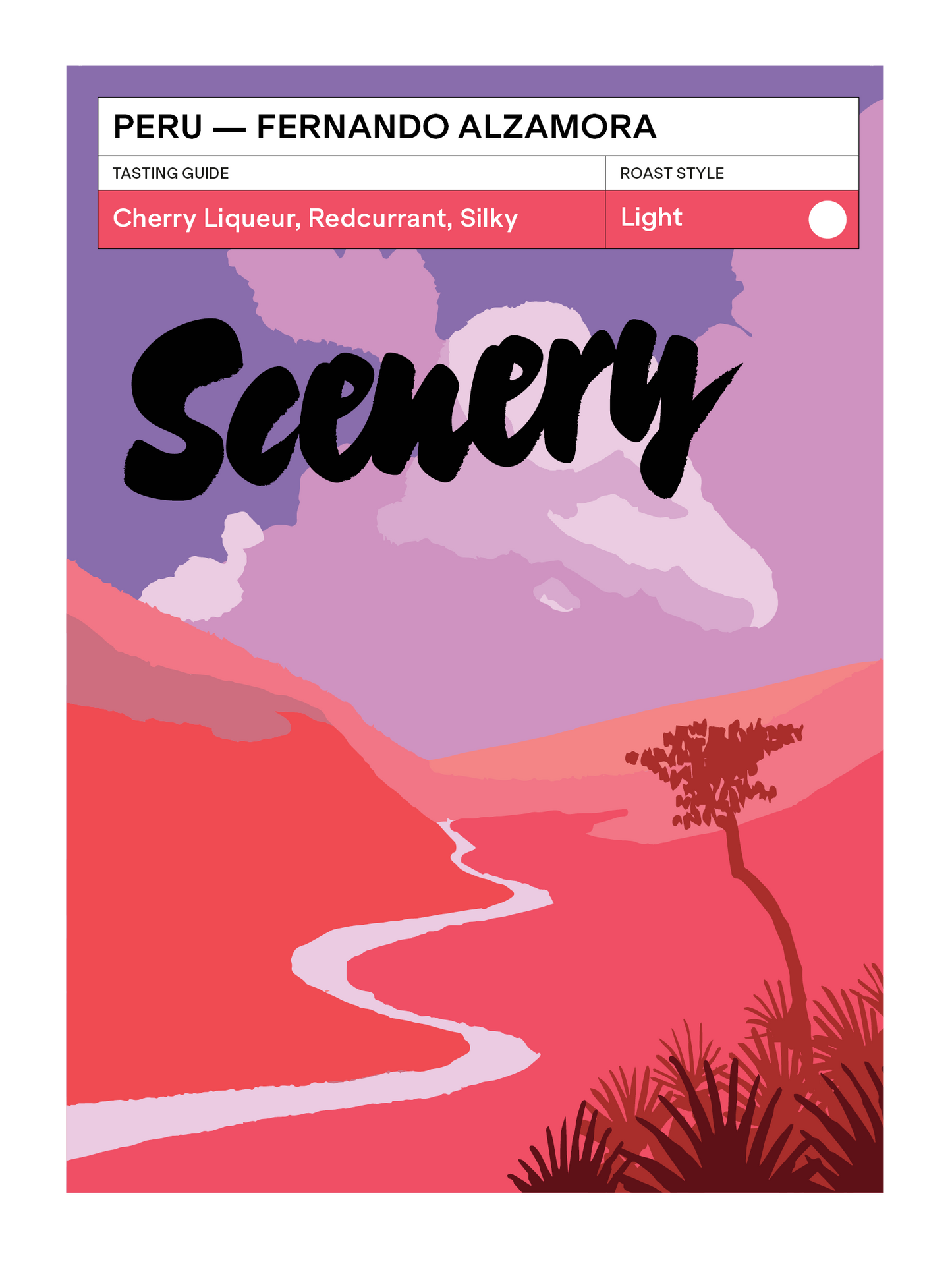
Brew Guide:
Best Brewed with: Filter
Light Roaster Influence: We've been playing around with this one in the profiling - finding it needed a little bit more of a push when compared to inoculated lots
Best Rested: 2-3 weeks
Filter: 62g/L & 96°C, with rest we like to move down to 64g/L & 93°C
Espresso: Turbo shots + 3 weeks rest. 18g/45g+ & 20s
We’re tasting: Dark chocolate and boozy cherry liqueur aromatics. These carry through into the cup, with a refined sugary sweetness, milk chocolate and redcurrant jelly, with a silky body.
Traceability
Country of Origin: |
Peru |
Region: |
San Antonio, Yanatile, Calca, Cusco |
Producer: |
Fernando Alzamora Puertas |
Farm: |
San Jose |
Variety: |
Bourbon |
Elevation: |
1800 MASL |
Process: |
Thermal Shock / Bioreactor Anoxic Honey Ripe cherries are picked and taken to the central processing station. The cherries are dunked in 86°C water for a period of 30s (“Thermal Shock) - both reducing microbial load as well as starting an enzymatic maceration process. Cherries then dunked in cold water to complete the process. Following this, the cherries are placed inside a controlled fermentation bioreactor - with an initial anoxic fermentation of 36hrs with pH and temperature carefully monitored. The cherries are then removed, pulped and the parchment returned to the bioreactor for a secondary 72 hr anoxic ferment with careful pH monitoring to determine the optimal end point. Parchment dried as a honey on raised beds for 24 days |
Import Partner: |
Que Onda |
Harvest |
24/25 - Arrived UK: Jan 25 |
The Story
Our second lot through Que Onda represents something significant: the democratisation of high-intervention processing. What was once the sole domain of a handful of Colombian producers is now spreading, and with this year we've purchased two (so far!) thermal shock lots from outside Colombia.
At Finca San Jose, Fernando has established a high technical intervention processing centre. The infrastructure investment is substantial - bioreactors, temperature monitoring, precision controls.
But where Colombian lots often rely on specific inoculated yeasts, Fernado's fermentations run with native microbes. High technical intervention while maintaining spontaneous fermentation. The kit to do this is a capital investment most smallholders can't access, but it shows how new origins are starting to adopt these methods. The next stage we suspect we'll see is the microbiology - perhaps first with coffee specific yeasts or suitably adaptable brewers yeasts, to reach that level of aromatic intensity the top Colombian lots are reaching.
Finca San Jose sits at 1800 MASL in San Antonio, Cusco. Fernando is farming classic varieties for Peru - Bourbon, Typica, Caturra. Technical processing creates new possibilities for value addition for these classic varieties, especially in places where logistics have been historically challenging for share of voice in a crowded market.
But there's a tension that's playing out across speciality coffee: as these high-capital, high-intervention methods create new value and styles, they risk leaving traditional lots and less advantaged producers behind.
We were afraid these coffees would fully displace the old style of coffee but we've seen something marvellous too - that they can act as a pathway into speciality, the way that Ethiopian naturals used to a decade ago - the new "I didn't know coffee could taste like this!" - and broadly speaking, if people are willing to value and pay for quality across all spectrums and there's diversity in what is offered, it can be no bad thing. And whilst we buy these coffees because we want to drink them, it holds as much of a place in our heart as a bright clean washed lot.
- Choosing a selection results in a full page refresh.
- Opens in a new window.

